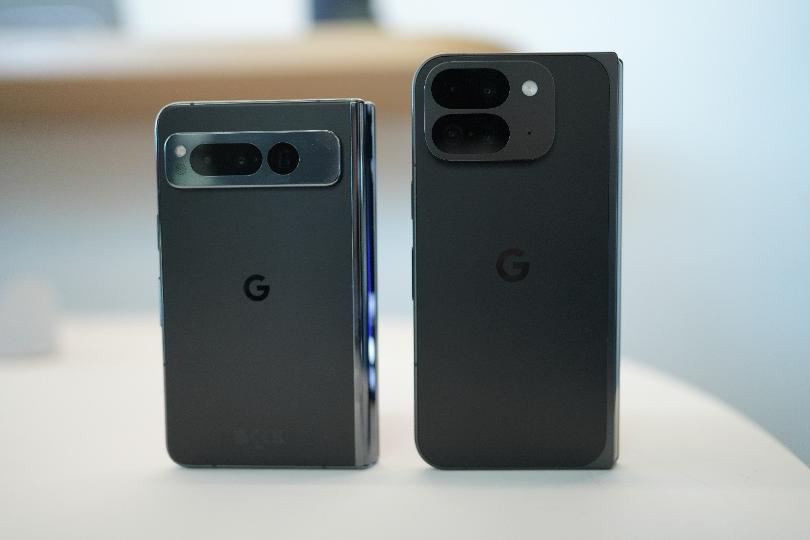Google Pixel 9 Pro Fold Review: A Promising Yet Imperfect Foldable
The Google Pixel 9 Pro Fold arrived with high expectations, promising a refined foldable experience that could rival established flagships. Paired with the Pixel Watch 3 and Pixel Buds Pro 2, the ecosystem aimed to deliver a seamless and integrated user experience. While the accessories proved to be valuable additions, the Pixel 9 Pro Fold itself fell short of becoming the ultimate daily driver, hampered by key compromises in critical areas.
Despite being a significant improvement over its predecessor, the Pixel 9 Pro Fold struggles with fundamental issues. The camera, a crucial aspect of any premium smartphone, suffers from a disconnect between preview and final images. While the post-processed images are often superior, the inconsistency is perplexing. Furthermore, the camera hardware and software experience lag behind the non-folding Pixel 9 Pro models, a surprising deficiency considering the Fold’s considerably higher price point. The abandonment of the reliable ultrasonic fingerprint sensor in favor of a less secure and convenient alternative adds to the list of puzzling design choices. The thick bezel flanking the front screen when closed creates an aesthetic imbalance that clashes with the otherwise sleek design.
Though burdened by these drawbacks, the Pixel 9 Pro Fold showcases significant progress compared to the original Pixel Fold. Its sleek and slim profile is a testament to Google’s design ingenuity, resulting in one of the thinnest foldables available. The overall design language aligns well with the Pixel 9 family, creating a cohesive aesthetic across the product line. The phone’s durability is commendable, withstanding accidental drops with minimal damage. The vibrant inner display enhances multitasking and app pairing, offering a glimpse into the potential of foldable technology. Features like "Made You Look," which leverages the outer screen and main camera to capture genuine children’s smiles, add a touch of thoughtful innovation.
However, the Pixel 9 Pro Fold’s connectivity performance undermines its potential. Both 5G and Wi-Fi connectivity are noticeably weaker compared to competing flagships, particularly in areas with marginal signal strength. The chosen modem appears to be the primary culprit, struggling to maintain consistent connections and draining battery life in the process. This subpar connectivity significantly impacts battery performance, often requiring activation of battery saver mode by day’s end. Fast charging capabilities are also disappointing, peaking at a meager 23-25 watts, far behind the industry’s advancements in fast charging technology. While this limitation is shared by Samsung’s flagships, the Pixel 9 Pro Fold’s inferior battery life makes this shortcoming more pronounced.
Further compounding the connectivity woes is a flawed wireless charging implementation. The repositioned charging coil necessitates specialized cases and renders most wireless charging stands incompatible, including Google’s own Pixel Stand. This impractical approach diminishes the convenience of wireless charging, a feature expected in a premium device. The decision to prioritize a flawed wireless charging system over robust wired charging is baffling.
In contrast to the phone’s shortcomings, the accompanying Pixel Buds Pro 2 and Pixel Watch 3 (45mm) excel in their respective roles. The Pixel Watch 3 boasts a larger, vibrant display, a refined design, and seamless integration with Fitbit fitness tracking. The inclusion of two years of free cellular connectivity adds value, though its practical necessity for most users is debatable. The Pixel Buds Pro 2 provide a balanced audio experience with decent noise cancellation and a secure fit, making them suitable for workouts. The Gemini Live AI assistant, while intriguing, has yet to demonstrate its full potential.
Despite these criticisms, the Pixel 9 Pro Fold represents a step forward in foldable technology. Its sleek design, improved inner display, and innovative features showcase the potential of this form factor. However, significant improvements are needed to address the critical flaws in connectivity, camera performance, and charging capabilities. To compete effectively against established players like Samsung and the emerging Chinese foldable manufacturers, Google must prioritize a flagship-level experience across all aspects of the device, minimizing compromises and delivering a truly premium foldable smartphone.
Addressing the connectivity issues, enhancing the camera system to match the non-folding Pixel models, and improving battery life and charging speeds are crucial steps towards achieving this goal. The Pixel 9 Pro Fold’s potential is undeniable, but realizing that potential requires a commitment to resolving these fundamental shortcomings. The foldable market remains ripe for innovation, and Google has the opportunity to refine its offering and become a true contender in this exciting segment. The hope remains that the Pixel 10 Pro Fold will learn from these missteps and deliver a refined foldable experience that lives up to its premium price tag.














